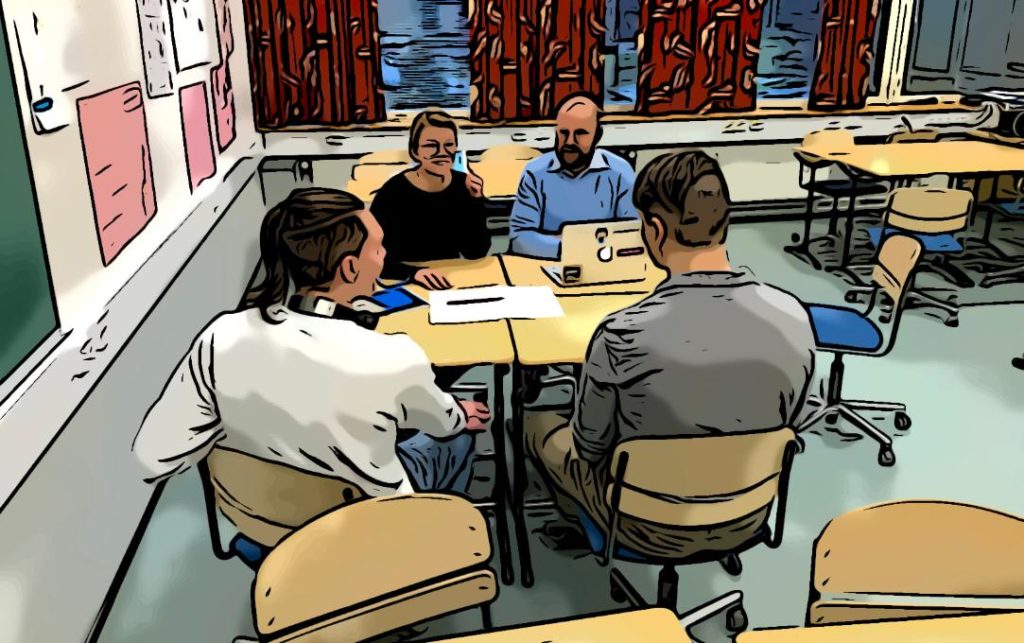
Teija Havana
Teija has worked as a senior teacher of psychology, religion and philosophy since 2004. She has experience with international projects and a degree both from Finland and the UK. Working at EduBorealis as a trainer and course developer. She is also an enthusiastic football player.
Even though I am a Finn and an introvert, I have experienced the power of teamwork so many times. The benefits of working with a group with my colleagues have been clear, we have solved many students’ learning related problems together. According to sociocultural theories of learning, the social environment has an influence on an individual’s cognitive development and other people have a strong role in the learning process. Working in the zone of proximal development means that with the help of the more advanced individual, I can master the task which I could not do on my own. Teacher, parent, or peer can be that more advanced individual for example. I think that working in small groups or teamwork can at it’s best mean working in the zone of proximal development for the students. The optimal teamwork would happen in a group in which students support each other with different tasks. And this same is possible for teachers as well. With my dear colleagues, I have had a chance to work in the zone of proximal development!
I have worked with my closest colleague for almost 15 years together. How is it even possible to teach together? Isn’t it hard to know what to do?
Our cooperation is not happening only inside the classrooms. We share all the material. We plan the curriculum and create assignments together. We are not competitors, we are a team. If one creates or invents something new, both of us benefit from that. This creates the basis of our co-teaching.

How is it possible?
In practice we teach together in the same room, simple as that. We might give a lecture together, which is actually quite fun. Or one can explain the theory and the other one helps individual students or groups with their tasks. Usually tasks are case studies or problem solving, that enables deep processing of the information. We have two classrooms to use in order to divide activities. At the beginning of the lesson, students can choose the right activity for their needs. Whether they want to continue solving the task or listening to some teaching.
Co-teaching enables teachers to use the kind of activities that I would or could not normally do in the classroom when I am alone. For example in this way it is possible to sit down with an individual student and discuss about her or his essay or life itself. Also there is more time to group assignments and feedback, because one teacher can take all the time needed for the group while the other can put down some fires like help with the immediate questions that students might have. It is important to take a moment and stop stressful hurrying with the students and create a peaceful atmosphere.
To be honest, we do not teach all the time together, we have our own courses and own lessons. This co-teaching offers refreshing experiences that we would like to do more.
Why co-teaching?
Co-teaching has many benefits. First of all it enables more time for individual students as there are two teachers in the classroom. And this means that we can better meet the students’ needs. For the teacher, it is beneficial because it relieves stress. We have been planning lessons together and it has made it an easier job as it doubles the ideas. In the lessons it is nice to ask a colleague if I do not remember some fact. You will receive an immediate answer. Two people know more than one person and it is definitely a benefit for students. And I do not get stressed if I do not remember something. Co-teaching helps on the emotional level as well. Problems do not have to be dealt alone. It is possible to project emotions and discuss them as soon as they appear.
In my experience a lot of development work has happened during the co-teaching. Conversation and planning together refines ideas. Quite recently we created an escape room exercise for psychology students. It would have been more difficult and taken more time alone. Co-teaching also enables easy and continuous exchange of teaching methods.
Last but not least: It is more fun! Many boring tasks might be more fun together.
What it requires?
Important thing is to get solid support from the principal. Co- teaching requires a culture to try and test different things. It is important that there is a permission to fail. If school can give the environment of trust, usually the learning outcome of this process is much more than expected, even though there are some failures. Of course some more resources are needed: enough classrooms and a paycheck for two teachers instead of one. But on the other hand this enables a bit bigger group of students.
It also helps if you get along with your colleague. Some common ideas about pedagogical philosophy will help in this process. For us it has happened quite easily because we think similarly about many things about learning.
How to start?
- Start sharing: materials, ideas, failures. You will see that you will receive more.
- Start a project together with a colleague. It can be very small.
- Invite your colleague to your lessons.
- Try to mark papers together. It can be very fun.
- Plan a lesson together.
- Plan a course together.
- Give an oral exam together.
- Give a lesson together.

